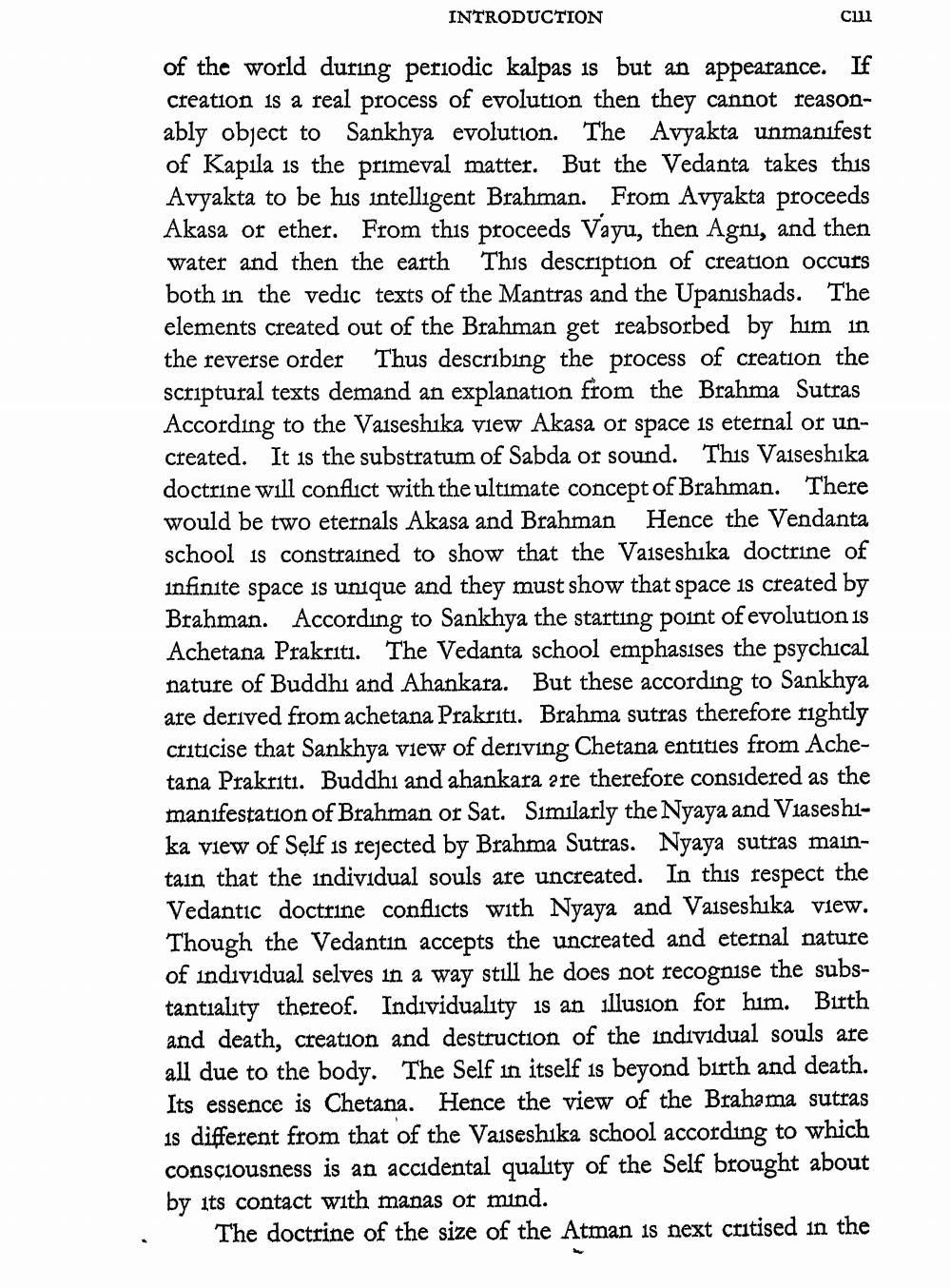________________
INTRODUCTION
of the world during periodic kalpas is but an appearance. If creation is a real process of evolution then they cannot reasonably object to Sankhya evolution. The Avyakta unmanifest of Kapila is the primeval matter. But the Vedanta takes this Avyakta to be his intelligent Brahman. From Avyakta proceeds Akasa or ether. From this proceeds Vayu, then Agni, and then water and then the earth This description of creation occurs both in the vedic texts of the Mantras and the Upanishads. The elements created out of the Brahman get reabsorbed by him in the reverse order Thus describing the process of creation the scriptural texts demand an explanation from the Brahma Sutras According to the Vaiseshika view Akasa or space is eternal or uncreated. It is the substratum of Sabda or sound. This Vaiseshika doctrine will conflict with the ultimate concept of Brahman. There would be two eternals Akasa and Brahman Hence the Vendanta school is constrained to show that the Vaiseshika doctrine of infinite space is unique and they must show that space is created by Brahman. According to Sankhya the starting point of evolution is Achetana Prakriti. The Vedanta school emphasises the psychical nature of Buddhi and Ahankara. But these according to Sankhya are derived from achetana Prakriti. Brahma sutras therefore rightly criticise that Sankhya view of deriving Chetana entities from Achetana Prakriti. Buddhi and ahankara are therefore considered as the manifestation of Brahman or Sat. Similarly the Nyaya and Viaseshka view of Self is rejected by Brahma Sutras. Nyaya sutras maintain that the individual souls are uncreated. In this respect the Vedantic doctrine conflicts with Nyaya and Vaiseshika view. Though the Vedantin accepts the uncreated and eternal nature of individual selves in a way still he does not recognise the substantiality thereof. Individuality is an illusion for him. Birth and death, creation and destruction of the individual souls are all due to the body. The Self in itself is beyond birth and death. Its essence is Chetana. Hence the view of the Brahama sutras is different from that of the Vaiseshika school according to which consciousness is an accidental quality of the Self brought about by its contact with manas or mind.
The doctrine of the size of the Atman is next critised in the
Cul




